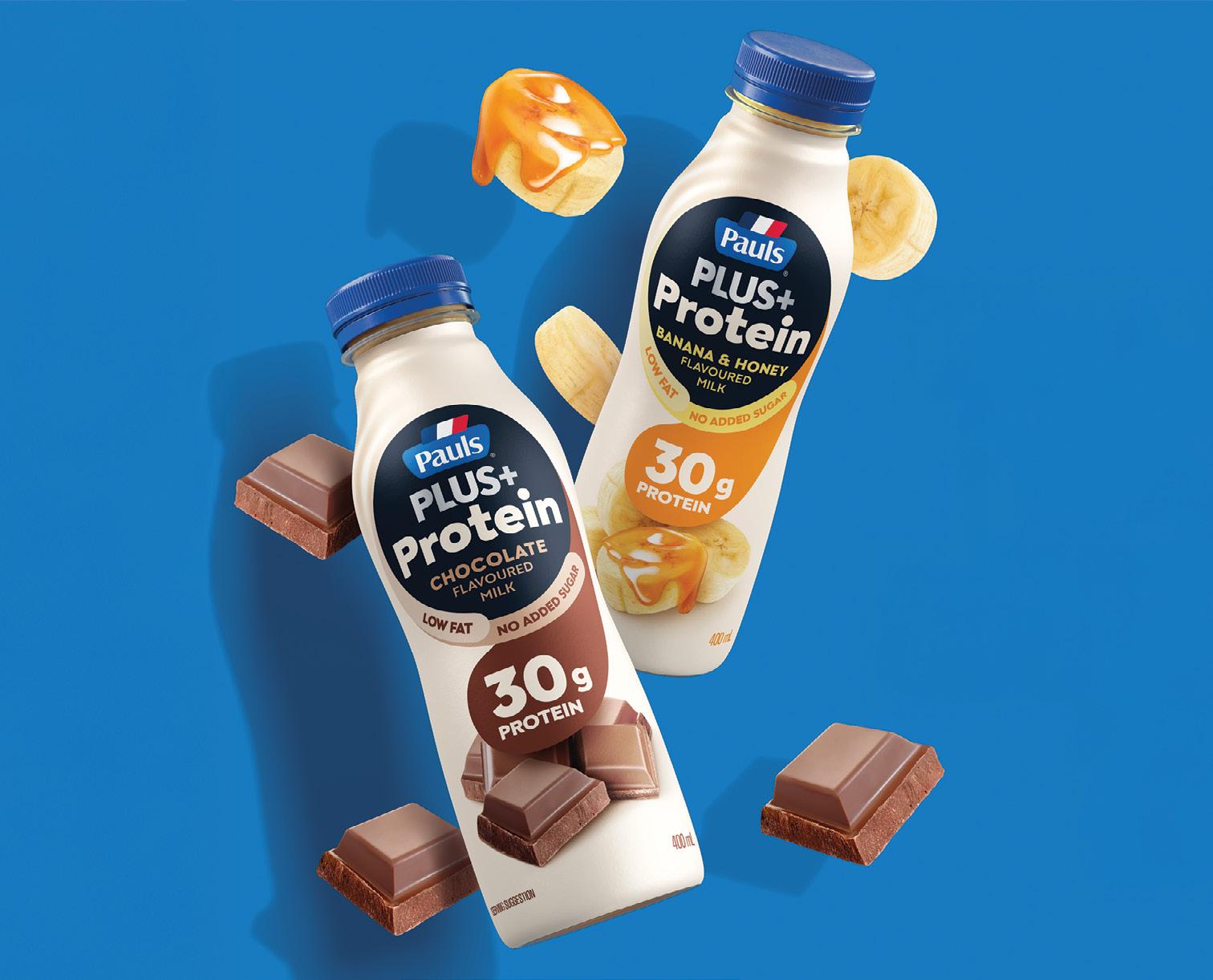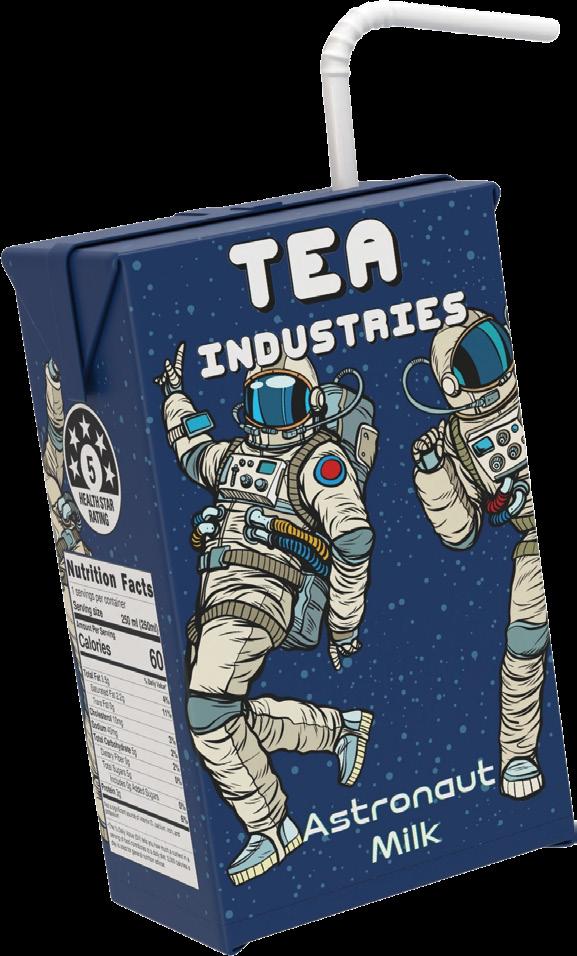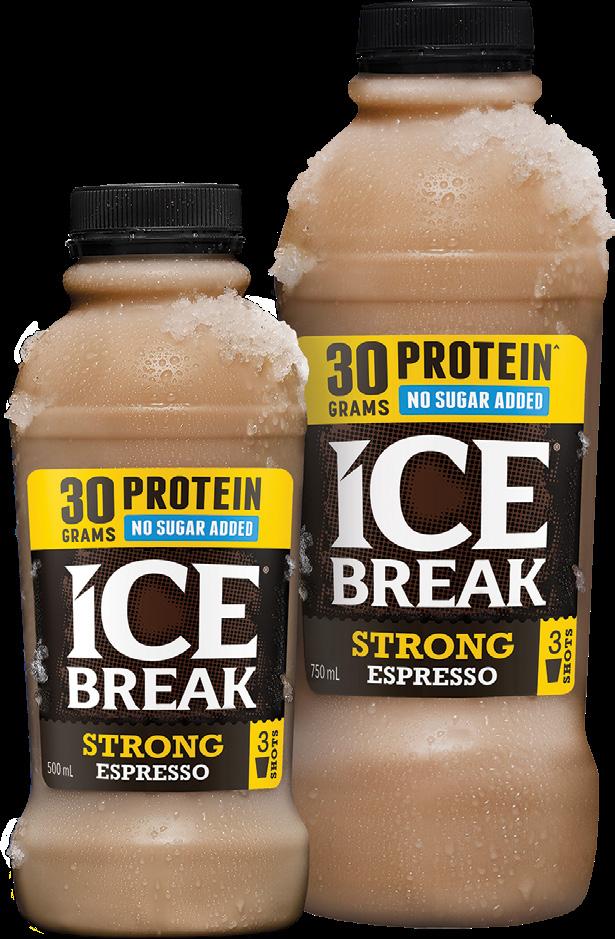
8 minute read
FEATURE: FLAVOURED MILK
Milking it
Flavoured milk thrives in P&C, driven by impulse buys, functional trends, and innovative product launches.
Words Deb Jackson
FLAVOURED MILK CONTINUES to be a powerhouse category within the petrol and convenience (P&C) sector, making up a significant portion of impulse beverage purchases. While traditional flavours like chocolate, strawberry and coffee remain top choices, new trends like highprotein, low-sugar, and plant-based alternatives are reshaping the market. Understanding these shifts and adapting accordingly is key to maximising opportunities in flavoured milk sales.

Consumer expectations are shifting, with a growing preference for products that deliver both taste and functional benefits. As an Ampol spokesperson explained, “Consumers look for value for money within the flavoured milk category, which tends to differ depending on the locality of the brand and consumer.
“High protein and no added sugar flavoured milks continue to perform well, given their functional benefits, while limited-time offerings have been embraced when available.”
Despite the pressures of rising living costs, flavoured milk remains a preferred beverage choice for many.
Daryl Barry, Senior Category Manager for Beverages at Bega Group, noted, “It has been a rollercoaster ride for flavoured milk in the P&C channel over the past year, with cost-of-living pressures severely impacting mobility and footfall into the P&C channel and shopper demand.”
However, for loyal shoppers, flavoured milk continues to perform strongly. “Those that remain loyal to the P&C channel are visiting more, browsing more, and spending more on each visit as they shop for better value and healthier alternatives,” Barry said.
What’s shaping the category
As consumer demands evolve, several key trends are influencing flavoured milk in the P&C sector.
One significant shift is the increasing emphasis on health-conscious and functional beverages. This trend is in line with changing lifestyles, where consumers not only seek beverages that taste good but also offer tangible health benefits.
As Barry explains: “Protein has exploded in the past 12 months in flavoured milk. The increasing importance of protein and eating well in popular culture is driving this segment as more competitors are expected to enter the market.”
This shift towards functional health is also closely linked to the rising demand for plant-based options.
Alexa Stathakis, Business Development Manager at Tea Industries, pointed out, “As more people embrace plant-based diets, it’s essential for retailers to offer non-dairy alternatives to meet consumer preferences.”
This insight mirrors the broader trend within the sector as younger, more diverse consumers increasingly seek out these plant-based choices. Stathakis also noted that plant-based flavoured milk is now expected to capture a larger share of the market as consumers focus on both taste and sustainability.
Demographic shifts are also playing a significant role. With younger generations like Gen Z and Millennials at the forefront, flavoured milk is increasingly being driven by a desire for more personalised, health-focused options. These consumers, who value functional ingredients, are more likely to opt for high-protein or low-sugar options.

As Barry highlights: “The younger demographic… seeks added benefits, not just free-from.”
Additionally, as consumers become more sustainability-conscious, flavoured milk brands are expected to innovate around eco-friendly packaging and ethical sourcing.
As Stathakis says, “Consumers are now more aware of sustainability. They expect the brands they buy from to be socially responsible, and this is filtering into their purchasing decisions.”
The move towards more sustainable production processes and packaging is no longer optional but an essential part of the buying experience.
A healthy approach
High-protein offerings have become one of the standout features in the flavoured milk category. As Barry says: “Protein is growing exponentially... As younger consumers seek functional health and better-for-you alternatives, protein-rich beverages are becoming a popular choice.”
This is evidenced by products like Dare’s 45g Protein 750ml, which has been gaining traction in the P&C channel, according to Barry.
Consumers are also increasingly aware of the impact of sugar on their health. The demand for no-added-sugar (NAS) flavoured milks is surging, and this is evident from the performance of brands offering reduced-sugar variants.
Those that remain loyal to the P&C channel are visiting more, browsing more, and spending more on each visit as they shop for better value and healthier alternatives.
- Daryl Barry, Senior Category Manager for Beverages, Bega Group
According to Jodi Lesch, Senior Category Development Manager at Lactalis Australia, “High Protein offers are delivering $8m of growth to the category, and No Added Sugar Iced Coffee is also performing well, contributing $2.8m.”
This trend reflects a broader movement towards healthier, more mindful consumption.
This demand for reduced sugar is complemented by a noticeable rise in lactose-free flavoured milks, with growth in this segment outpacing even plantbased alternatives.
Lesch continued: “Lactose Free is over double the size of plant-based alternatives in P&C… Lactose Free is the fastest-growing segment within the White Milk category in the grocery channel and gaining steady traction in P&C.”
Key drivers of sales
Packaging size is becoming more important as younger generations prefer smaller pack sizes. Barry notes that this is already evident in the energy category, now the largest in convenience, as consumers seek “high octane energy hits from their functional beverages in small doses”.
Recent inflation has made 500ml–750ml sizes less affordable. As Barry says, “smaller packs in the right format enable P&C shoppers to have one for now and one for later”.
High Protein offers are delivering $8m of growth to the category, and No Added Sugar Iced Coffee is also performing well, contributing $2.8m.
- Jodi Lesch, Senior Category Development Manager, Lactalis Australia
Stathakis also emphasises the importance of packaging in shaping consumer perceptions.
“For flavoured milk to succeed in the P&C channel, the packaging must be convenient, functional, and appeal to the health-conscious consumer,” she said. Stathakis also highlighted that this format aligns well with current consumer trends toward functional, ready-to-consume beverages.
Effective placement of flavoured milk is just as important as packaging. Lesch pointed out, “Strategic placement in high-traffic areas (such as near checkouts or in the health section of the P&C store) significantly boosts sales.”
Barry explains that research shows that 86 per cent of beverage purchases are made from the main fridge, and 40 per cent of milk beverage sales in P&C occur between 5am – 10am. This underscores the importance of positioning popular products in visible, easily accessible locations during peak hours.
Innovation and NPD
The flavoured milk category is experiencing rapid innovation, with new products being launched to cater to evolving consumer demands. Highprotein options like the Dare 45g Protein 750ml and collaborations such as Dairy Farmers/Mars and Maltesers are capturing consumer attention. As Lesch says, “We predict that the total category will grow around five per cent in value for the next 12 months... Protein is a key driver of growth.”

In this landscape of innovation, Stathakis believes that functional ingredients will play an even larger role in the future.
“We’re seeing more flavoured milk products enriched with functional ingredients such as adaptogens and botanicals, catering to the growing trend of wellness,” she explained.
This aligns with the broader push toward health-oriented beverages that not only provide nourishment but also promote well-being.
Retailer recommendations
For retailers looking to maximise flavoured milk sales in the P&C sector, a value-driven approach is key.
As Barry succinctly puts it, “The right range, with the right space at the right time with full availability is the key to retail success.” Ensuring popular products have adequate shelf space during peak hours will drive sales.
Retailers should also embrace promotional strategies, which can significantly boost sales and encourage repeat purchases.

“Promotions play a crucial role in convenience, attracting customers, boosting sales, and managing inventory by offering incentives like discounts, multibuys, loyalty programs, and special offers,” he said.
Flavoured milk continues to be a strong performer in the P&C sector, driven by impulse purchases and evolving consumer preferences. The rise of protein, plant-based, and low-sugar options, combined with innovative packaging and strategic placement, will shape the future of the category. As consumers continue to prioritise health, sustainability, and convenience, retailers that stay ahead of these trends and adapt quickly will continue to thrive in this competitive market.
FIVE TIPS FOR RETAILERS:
1. Leverage Impulse Buys: Stock high-traffic areas and use eye-level placements to drive spontaneous purchases.
2. Embrace Health Trends: Offer high-protein, low-sugar, and lactose-free options to cater to health-conscious consumers.
3. Optimise Promotions: Run targeted deals like combo offers and limited-time promotions to increase footfall and sales.
4. Adapt Packaging Size: Provide smaller, single-serve packs for on-the-go customers while also offering larger sizes for bulk buyers.
5. Track Consumer Trends: Stay ahead of emerging flavours and functional beverages, such as plant-based or fortified options.




